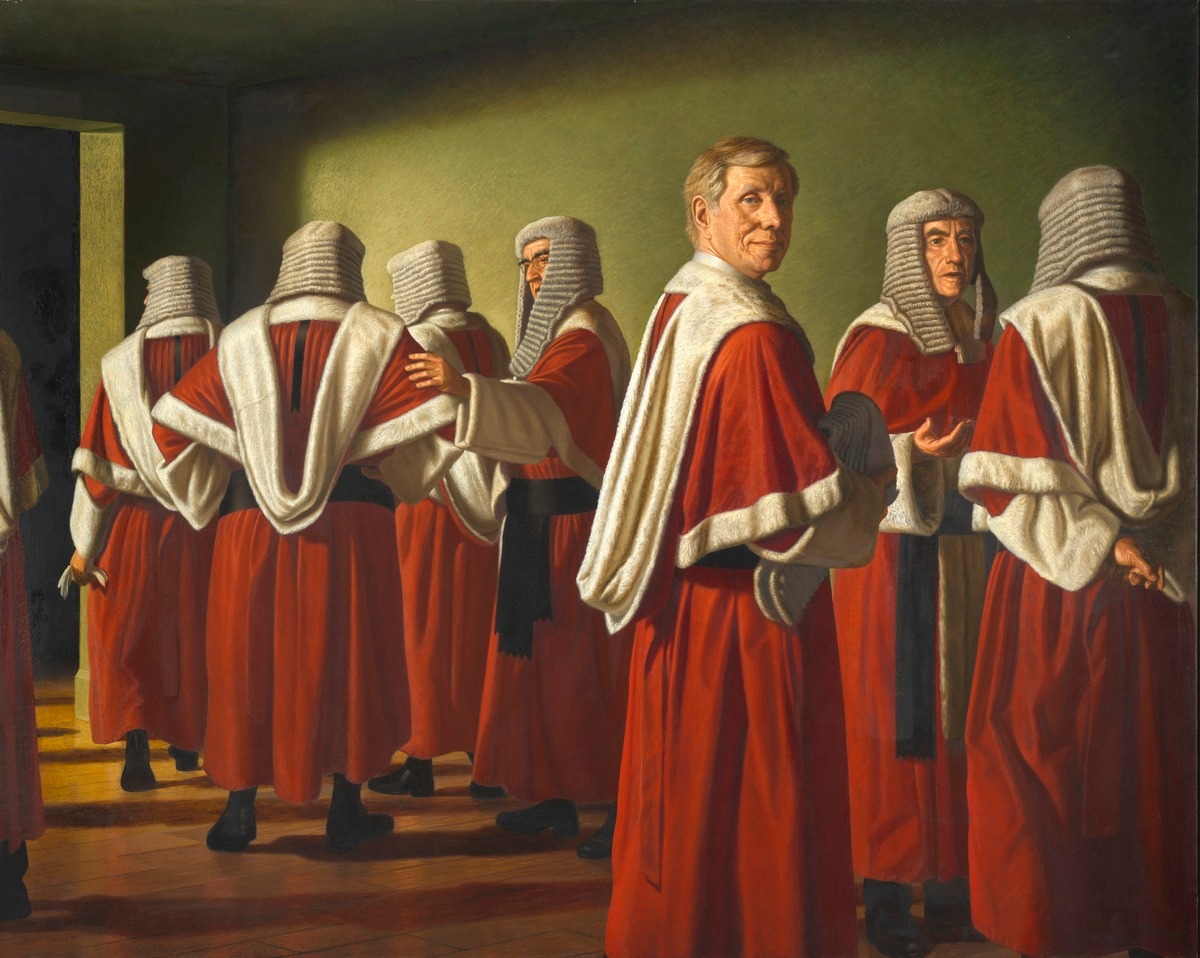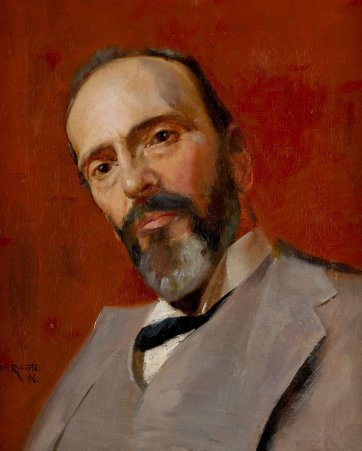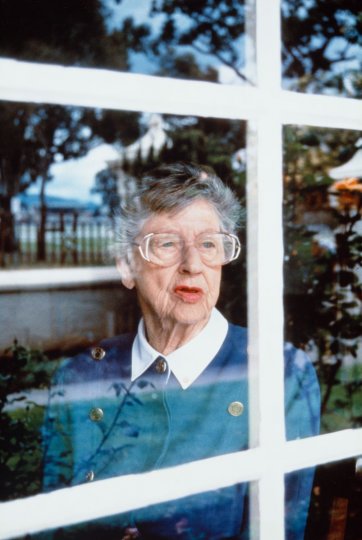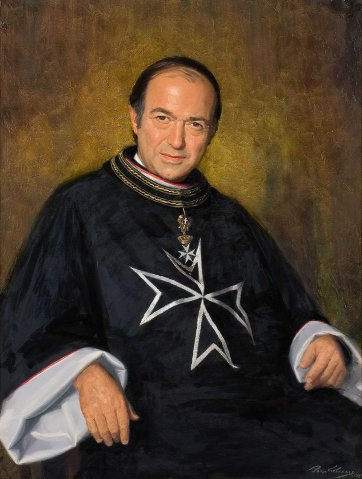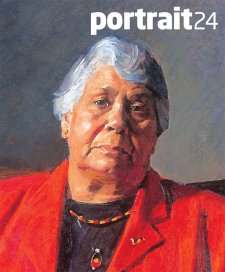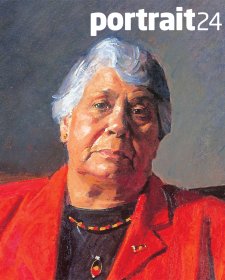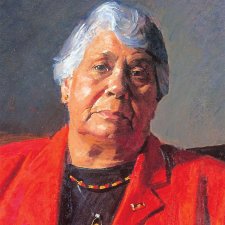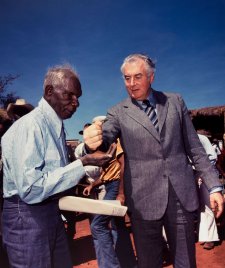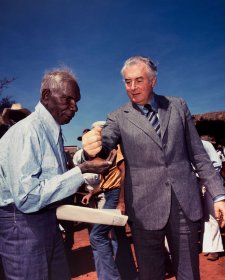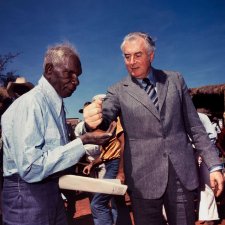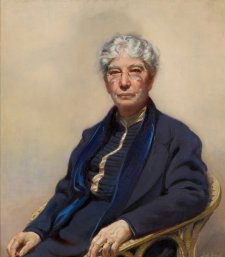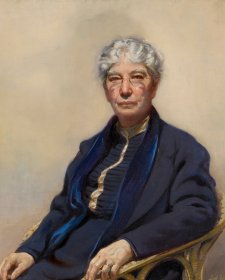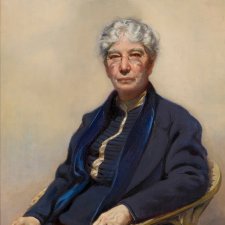If a traditional goal of the portraitist has been to capture the personality and character of the sitter then a judge presents an almost insurmountable challenge as a subject. The requirements traditionally associated with judicial office, of independence, of service to the existing law and of dedication to the impartial application of that law, require that those who hold judicial office leave, and are perceived to leave, their personal and individual histories, perspectives and prejudices behind when they take on the role of judge.
Judicial portraits commonly found in the public parts of Court buildings give visual form to these judicial virtues. These portraits, dominated by the robes and wigs of judicial office tend to hide the body and obscure the face of the sitter. The limited repertoire of poses and the inevitable background of a wall of law books add further constraints. Located high on the walls of the court individuality is further obscured. Clustered in groups the viewer observes not portraits of individuals but an image of an institution and the enduring tradition of particular virtues. Faced with these social values and aesthetic conventions portraitists may struggle to reveal what judges devote much energy to hiding. The National Portrait Gallery's collection of portraits of judges demonstrates a range of responses to the challenges of this tradition of judicial portraiture. Only one portrait in the collection, Ralph Heimans's Radical Restraint: Justice Michael Kirby, portrays a sitter in robes of judicial office. The others portray the sitters in a number of ways that avoid any direct visual or symbolic reference to judicial office. The sketch portrait of Alexander Campbell Onslow, sometime Chief Justice of Western Australia, by Tom Roberts and Jessica Hromas's photographic study of Dame Roma Mitchell, Australia's first female Supreme Court judge show the sitters in contemporary everyday clothing. Largely devoid of any background detail that might indicate the sitters' sometime professional life as a judge the artists have chosen to focus on the face. In part the decision not to make reference to judicial office might reflect the fact that these sitters performed many different roles in their public lives, as lawyers, politicians, Governors, as well as judge. The preoccupation with the face of the sitter follows the conventions of portraiture that highlight the role of portraiture as a study of individual character and personality without obvious reference to a specific context or role. Two other portraits in the collection show the adoption of a different approach using clothing to highlight the sitter's particular qualities and virtues. Paul Fitzgerald portrays Sir James Gobbo, a judge of the Supreme Court of Victoria from 1978-1994 and Governor of Victoria from 1997 to 2000 in the Grand Cross of Magisterial Grace regalia, drawing attention to his association with the Sovereign Military Order of Malta, of which he was president from 1982-97. The regalia highlights the sitter's religious affiliations and his charitable activities. The clothing symbolises their qualities and values and connects them to the sitter's character and personality. In Arnold Shore's portrait of HV (Doc) Evatt, the youngest person ever appointed to the post of judge in the High Court of Australia, Evatt is shown not in his judicial robes but in the red academic robes of Doctor of Laws an award made to him by the University of Sydney. Painted in 1935 some five years after he was appointed a Justice of the High Court, the choice of dress gives emphasis to Evatt's intellectual qualities without particular visual reference to their relevance to his role as Justice of the High Court. If judicial office is not symbolised in the image itself in these portraits is it there at all? Yes, it is. But it is to be found not in the image itself but in the text that accompanies the image. One reference (for those familiar with the sitter) is the name of the subject of the portrait. The other key source of information is the narrative that accompanies the image on the gallery wall. Both provide a frame that enables the viewer to contemplate the image as a portrait of a judge. The presence of several figures all dressed in the judicial regalia of wigs, crimson and fur in Radical Restraint: Justice Michael Kirby by Ralph Heimans suggests that this artist too took a very different route in response to the challenge of portraying a judge. During the course of a visit to the Gallery in 2001 Heimans spoke about the portrait. Contrary to first impression from viewing the finished portrait, Heimans's initial response to the challenge was much like that we have already encountered. His intention was to paint a portrait of Michael Kirby without making reference to his work as a judge. However, unlike these other artists he abandoned this approach. Why? During an early meeting with the sitter Heimans asked Michael Kirby, 'What do you do in your spare time?' His reply, 'work', seems to have closed the door on Heimans's original plans. The artist's response seems to have been to meet the challenge head on. But does this mean that the resulting portrait is little more than an institutional portrait largely devoid of the individual personality and character of Michael Kirby? In short, no. The title of the portrait, Radical Restraint: Justice Michael Kirby, offers a number of insights into the way Heimans resolved the challenge of representing individual character while respecting the well established conventions of formal judicial portraits. By introducing several figures into the portrait, most of whom are characterless and literally faceless, Heimans offers us a study of the qualities associated with judicial office such as tradition, independence and selfless dedication to law. The setting, an austere space devoid of any particular signs or symbols, adds further to the air of anonymity and dedication to nothing other than the law. The image of Michael Kirby appears to disrupt this state of affairs as is symbolised by the fact that he carries the wig in his hand and not on his head, revealing his face. His over-the-shoulder look provides a classic three-quarter face. The contrast between light and shade allows the portraitist to produce a more complex multidimensional representation of the sitter's character. Flouting the conventions of formal judicial portraiture gives symbolic form to the 'radical' dimensions of Kirby's public persona, his distinctive voice on the Bench of the High Court, his high, and for some controversial, media profile. At the same time the references to the aesthetic conventions of formal judicial portraits, Heimans explained, is also a reference to the painter's experience of Kirby's character, the 'restraint' of the title. It gives symbolic form to the sitter's devotion to established judicial traditions, his staunch support for monarchy in Australia and other dimensions of his character which Heimans described as upright, rigid and slow moving. Rather than avoiding the restricting conventions of formal judicial portraits Heimans reworks them to explore individual character and to tell a rather different story of a judge. Does one approach offer greater insight into the character of the sitter as judge? I am tempted to say, no, but I will let you decide. Rarely displayed together, the images of judges in the National Portrait Gallery's collection provide a diverse and fascinating study of the challenges of producing portraits of some of the most important but most enigmatic decision makers in Australian society.
